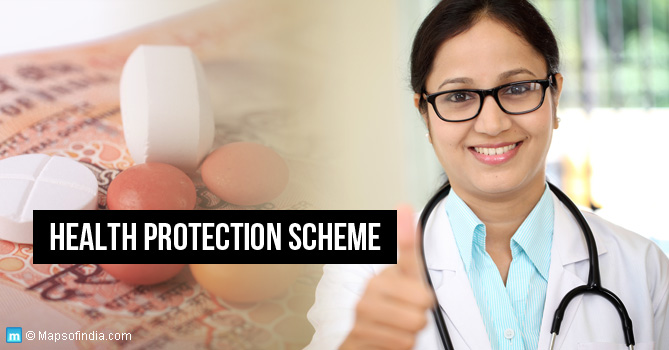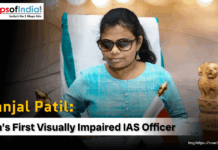India’s Finance Minister, Arun Jaitley presented his budget to the Lok Sabha on 29 February 2016. The budget has been hailed as the NDA government’s best yet; the obvious reasons seem to be the plethora of socialist programmes outlined by the FM. The NaMo government is certainly taking its welfare agenda seriously. Even as he started to outline the social and health programmes to be launched by the Indian government in the upcoming financial year, FM Jaitley quoted the renowned visionary Swami Vivekananda – “No amount of politics would be of any avail until the masses in India are well educated, well fed and well cared for”. While that has rarely been the objective of politicians, if the current and forthcoming governments do make Vivekananda’s ideals their priority, our nation is all set to see the launch of a number of welfare and social security schemes. Starting with the new Health Protection Scheme.
Health Protection Scheme
In his 2016 budget speech, FM Jaitley launched a health protection scheme – a scheme that is likely to bring much relief to the masses oppressed by rising healthcare costs. He said, “Catastrophic health events are the single most important cause of unforeseen out-of-pocket expenditure which pushes lakhs of households below the poverty line every year. Serious illness of family members cause severe stress on the financial circumstances of poor and economically weak families, shaking the foundation of their economic security . In order to help such families, the Government will launch a new health protection scheme which will provide health cover up to INR One lakh per family.”
With this, the government has announced its plans to roll out a health protection scheme, which will offer a cover of up to INR 1 lakh per family to cover medical treatment costs. For senior citizens (either gender, of age 60 years and above) eligible for this cover benefits, the government will offer an additional top-up package up to INR 30,000.
One of the key challenges to obtaining proper health care and treatment is obtaining quality medicines at affordable prices. To counter this concern, the government will also be opening up 3,000 medicine stores across the country (in 2016-17). Generic drugs will be made available in these stores under Prime Minister’s Jan Aushadhi Yojana.
The specifics of this health protection scheme are yet to be announced but it is likely that it will replace the existing Rashtriya Swasthya Bima Yojana (RSBY) scheme which works on a center-state partnership model and provides a cover of INR 30,000 for a family of 5 members.
National Dialysis Services Programme
FM Jaitley noted, in his speech, that each year about 2.2 lakh new patients are added to the menace of End Stage Renal Disease. This means an additional need for about 3.4 lakh crore additional dialysis sessions at hospitals and medical centres. Estimating an average cost of about INR 2000 per dialysis session, this means that families of these patients incur an additional expense of about INR 3 lakh per annum. Add to this the loss of wages, travel costs, and other expenses borne by families and the result is a crippling expenditure.
Apart from the costs, the lack of adequate facilities is another major concern. India currently has about 4,950 dialysis centers, most of these in private hospitals and clinics. This makes it possible for only half the demand (dialysis needs) to be met. To increase the availability of dialysis centres, the FM announced the launch of a National Dialysis Services Programme, under which funds will be made available through public private partnership mode. The scheme (as part of the National Health Mission) will provide dialysis services in all district hospitals. The cost of dialysis will also be reduced considerably since the FM announced that certain parts of dialysis equipment will be exempted from basic customs duty, excise, Countervailing Duty (CVD), and Special Additional Duty (SAD) as well as making procurement cheaper.
Why is this scheme important?
It is an undisputed fact that India is one of the world’s favorite medical tourism destinations. Superlative medical services, experienced health professionals, and state-of-the art facilities – all available in most of the metro cities of the country. Very inexpensive by international standards; an American patient can get most of the sophisticated treatments done here at about a tenth of the cost that he would incur back home. But what about Indians? Medical treatment and healthcare facilities remain unaffordable to most, if available at all. Most rural regions are ill equipped to handle anything more complex than routine ailments.
According to a survey by the National Sample Survey office in 2014, average hospitalization costs across India are growing at more than 10 percent each year. With more patients approaching private hospitals and clinics for treatment, medical costs are rising well above the nation’s average inflation. The pinch of these burgeoning healthcare costs is felt most by the poor and lower middle class stratas. According to a 2011 research undertaken at the Tata Institute of Social Sciences, medical expenses account for over 15 percent of the nation’s poverty burden. This is only likely to get worse unless the government steps in with adequate measures to alleviate this burden.
One of the key election promises made by the NDA was the roll out of a Universal Health Assurance Mission – free drugs and diagnostic treatment to the entire nation. Even as the NaMo administration took over the center in 2014, this plan faced a lot of flak. The estimated outlay for covering the entire 1.2 billion population’s healthcare was estimated at about INR 1.6 trillion (2016 – 2020). The outlay was unsustainable and the ambitious plan rather impractical, it seemed. By 2015, budgetary constraints ran the plan aground. The NDA, however, did not give up on its intention to make healthcare affordable for the masses. The Health Protection Scheme comes as a natural corollary to the government’s efforts to make medical treatment available and affordable.






